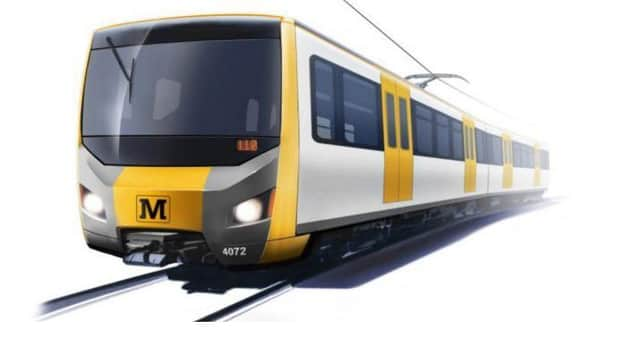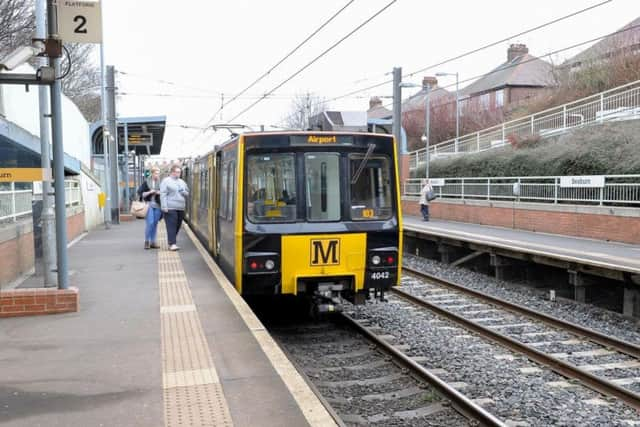Sunderland City Council to oppose proposed new Metro seating over standing time concerns for passengers


Chancellor Phillip Hammond confirmed in last week’s Budget that £337 million will be invested to overhaul the transport system, replacing the 40-year-old trains with a brand-new fleet.
And earlier this year there were calls for any new trains to show a preference for linear seating - running along the sides of the trains, similar to London Underground and many other major city underground and rail trains.


Advertisement
Hide AdAdvertisement
Hide AdThe North East Combined Authority’s (NECA) Transport Committee is due to vote on the proposals on Thursday at Gateshead Civic Centre, but Coun Michael Mordey, Sunderland City Council’s cabinet member for city services, says the council intends to vote against the plans to introduce “longitudinal seating”.
He added that using that layout would result in between 20-25% fewer seats than the fleet offers now.
Coun Mordey explained: “With that scale of investment we should be offering greater levels of passenger comfort not less.
“Adoption of longitudinal seating will mean the new fleet will have between 20 per cent and 25 per cent fewer seats than the current fleet.


Advertisement
Hide AdAdvertisement
Hide Ad“This new generation of rolling stock will be in operation until at least 2060.
“It is imperative that the correct decision is made now.
“The previous Nexus/Newcastle University/Transport Focus research is fundamentally flawed in that passengers were never asked if they prefer to sit or stand.
“The research simply assumed that passengers didn’t mind standing and the remaining questions related to comfort in standing.


“The observations in the Sunderland area suggested that instead of people having to stand from Seaburn heading towards Newcastle in the morning peak, this would occur from Park Lane or Sunderland with the longitudinal layout.
“This isn’t acceptable.
Advertisement
Hide AdAdvertisement
Hide Ad“I would imagine similar experiences would be faced by passengers travelling from South Shields or the Whitley Bay/Tynemouth area and vice versa.
“Longitudinal seating is ideal for ‘mass transit’ conditions as found in the central areas of very large cities (London is the only UK example).


“In those conditions journeys tend to be short – no more than 10-15 minutes and it is often more convenient to stand than to find a seat.
“The Metro isn’t ‘mass transit’.
“It is a suburban railway where crush loading is rare outside of the peaks in the central Newcastle tunnels.
Advertisement
Hide AdAdvertisement
Hide Ad“Between Sunderland and Newcastle it is more of an inter-urban railway for which longitudinal seating is totally unsuitable.
“Journeys times from most Sunderland stations to Newcastle are around 35-40 minutes and 55-60 minutes to the Airport.
“These journey times are far too long to expect an appreciable number of passengers to stand for all or most of the journey.
“Part of the journey experience of rail travel is the ability to look out of the window.
Advertisement
Hide AdAdvertisement
Hide Ad“This is difficult if passengers have their back to the window.
“Psychologically a carriage with very few seats and large standing areas suggests to the customer that the operator thinks only a cattle truck is good enough for them.
“Longitudinal seats do not offer a comfortable journey experience even to those passengers lucky enough to find a seat.”
Coun Mordey added that following research from Sunderland City Council, adopting a “hybrid” layout for the carriages would be more suitable.
Advertisement
Hide AdAdvertisement
Hide Ad“In our opinion, there are no real cogent arguments presented in the report as to why a hybrid layout is not recommended,” he said.
“As an example of hybrid layouts, the Vossloh Class 399 ‘tram/trains’ in South Yorkshire succeed in providing a high density seating layout using a hybrid of longitudinal and transverse seating.
“The middle car of the three-car units is entirely transverse seating with longitudinal seating, wheelchair and buggy bays and standing areas in the end cars.
“They are capable of seating 88 passengers and 150 standees in an overall length of 37.2metres.
“Passengers now expect phone charging/USB sockets.
Advertisement
Hide AdAdvertisement
Hide Ad“Where would these be located if seat backs are along the wall of the carriage?
“The proposals are at odds with current best practice in the bus industry where provision of individual moulded seats with ‘Bentley style’ stitched leather upholstery and charging/USB sockets at every seat are now regarded as industry standard.
“A review of the research commissioned by Nexus supported by a literature review by Sunderland City Council officers has found insufficient evidence to support adoption of longitudinal seating.
“It does however suggest that there is some merit in further exploring hybrid layouts to both maximise availability of seating and to allow greater comfort when passengers do have to stand.
Advertisement
Hide AdAdvertisement
Hide Ad“In our opinion, if we specify longitudinal seating it will mean Metro passengers in the outlying areas seeing a demonstrable decline in the quality of their Metro experience.
“That is why we will be putting forward a proposal to adopt a hybrid layout as opposed to specifying longitudinal seating as set out in the recommendation in the report to TNEC.”
The Transport Committee is set to meet at 10.30am on Thursday.